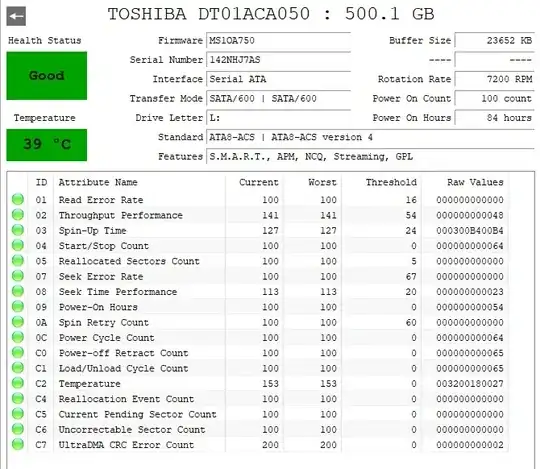I just salvaged this very old Toshiba HDD (from 2014). I installed it in my PC, formatted and ran a CrystalDiskInfo. It shows very little usage and is marked as healthy, but all the parameters seem through the roof. I don't really understand what that means, since I don't really know anything about this kind of stuff. Here's a screen capture of the CrystalDiskInfo results:

Please help read into those numbers to figure out if this old drive is worth using or I'm better off just recycling it.
Thanks!